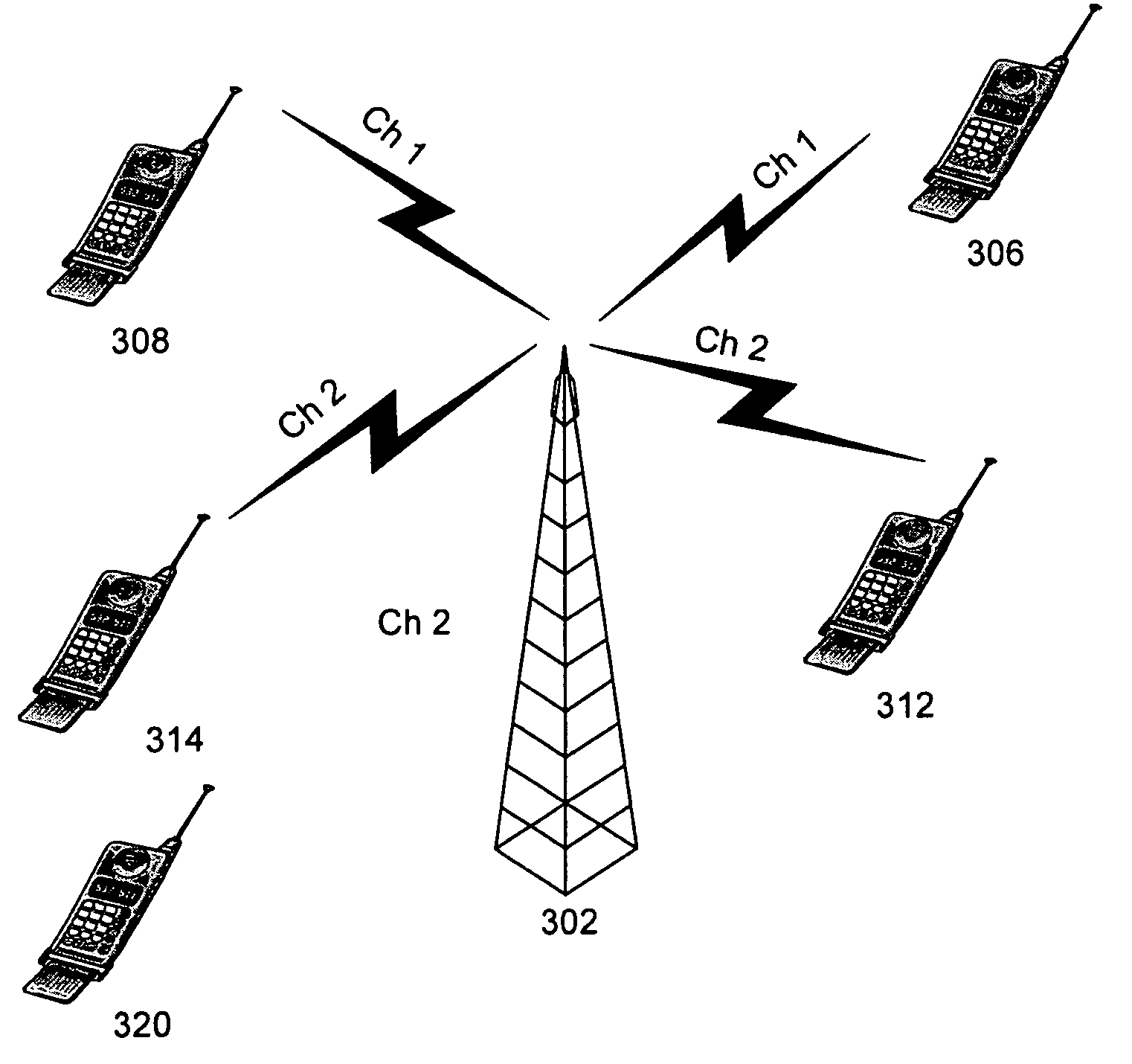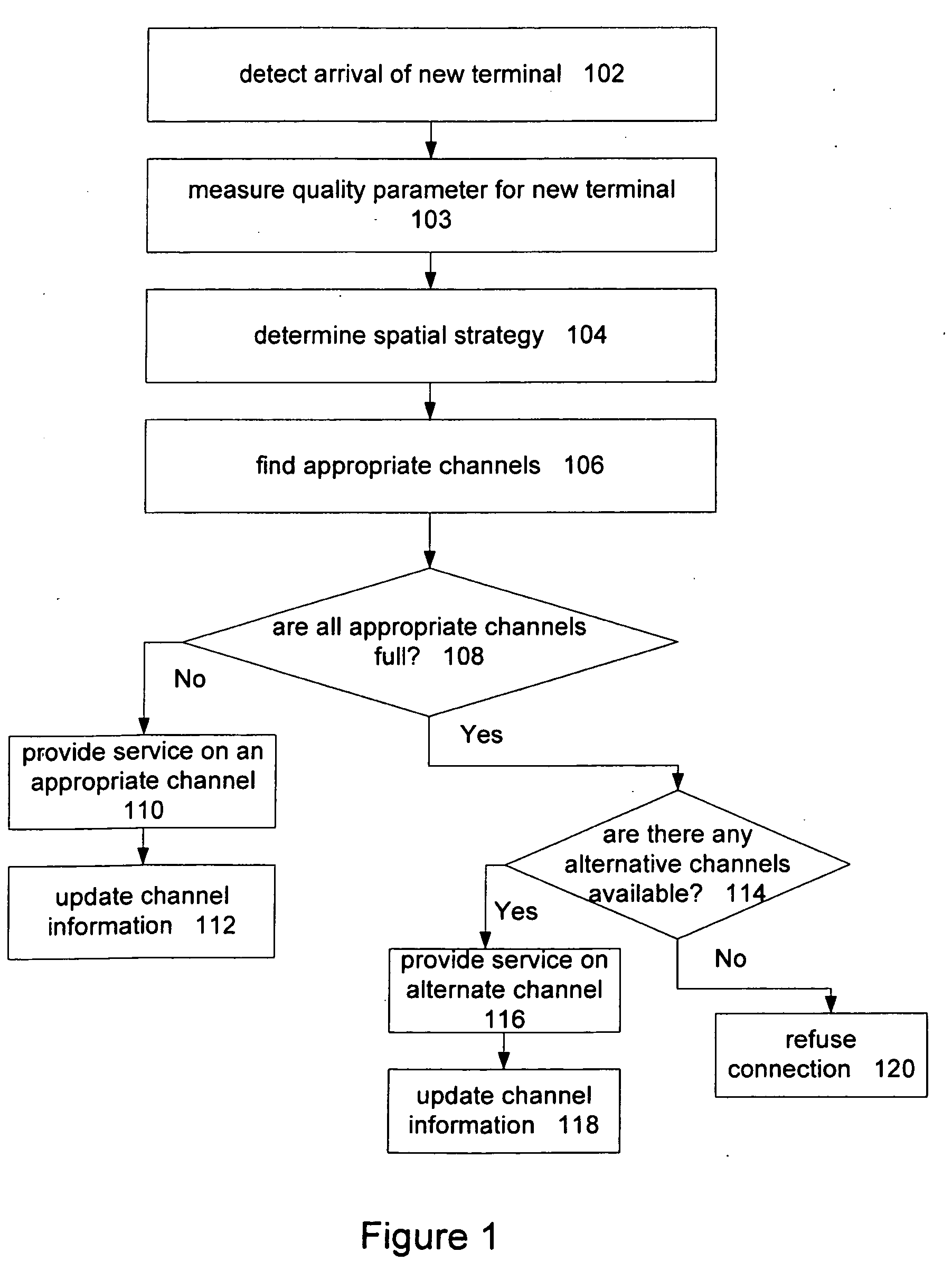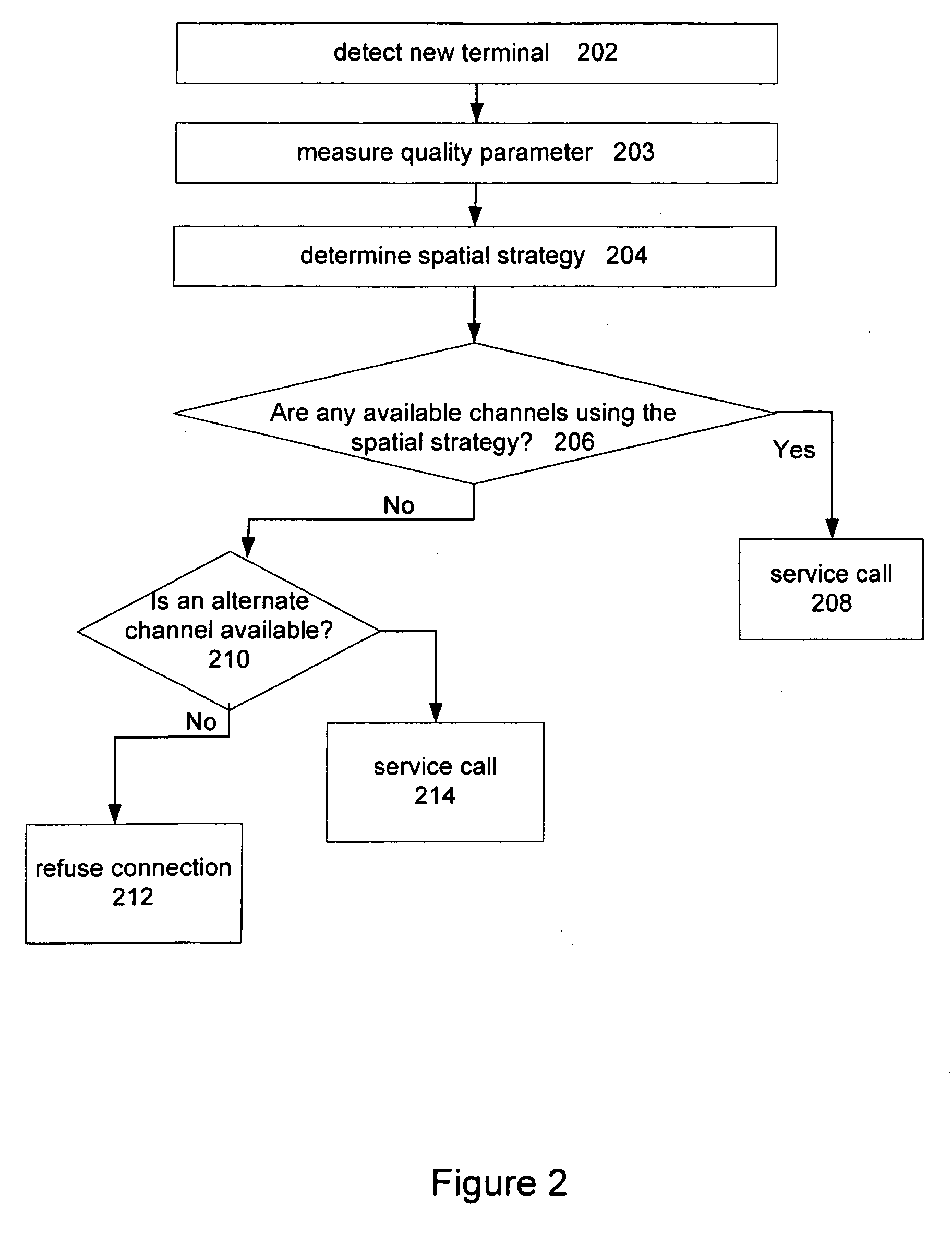Channel Assignment Based on Spatial Strategies in a Wireless Network Using Adaptive Antenna Arrays
a wireless network and spatial strategy technology, applied in the field of wireless communication systems using adaptive antenna arrays, can solve the problems of system with a predetermined number of user terminals, the system cannot operate at maximum capacity, and the system cannot provide optimal service quality
- Summary
- Abstract
- Description
- Claims
- Application Information
AI Technical Summary
Benefits of technology
Problems solved by technology
Method used
Image
Examples
Embodiment Construction
[0018]A communications channel can be assigned to a user terminal by first determining a spatial strategy, such as a co-spatial constraint for the user terminal. Alternatively, user terminals can be assigned to a communications channel by comparing a co-spatial constraint assigned to the user terminal to those assigned to the available channels. Terminals with similar constraints can be grouped on the same channel. Such an approach can be used to optimize system capacity.
[0019]The capacity of a wireless communications network can be increased by allowing different radio communications channels to support different numbers of co-spatial users. The number of co-spatial terminals for each conventional channel can be determined based on the capacity of each terminal to be co-spatial with other terminals in the existing radio frequency (RF) environment, among other things. Any of a number of different quality parameters, such as distance from the base station, can be determined for each ...
PUM
 Login to View More
Login to View More Abstract
Description
Claims
Application Information
 Login to View More
Login to View More - R&D
- Intellectual Property
- Life Sciences
- Materials
- Tech Scout
- Unparalleled Data Quality
- Higher Quality Content
- 60% Fewer Hallucinations
Browse by: Latest US Patents, China's latest patents, Technical Efficacy Thesaurus, Application Domain, Technology Topic, Popular Technical Reports.
© 2025 PatSnap. All rights reserved.Legal|Privacy policy|Modern Slavery Act Transparency Statement|Sitemap|About US| Contact US: help@patsnap.com



